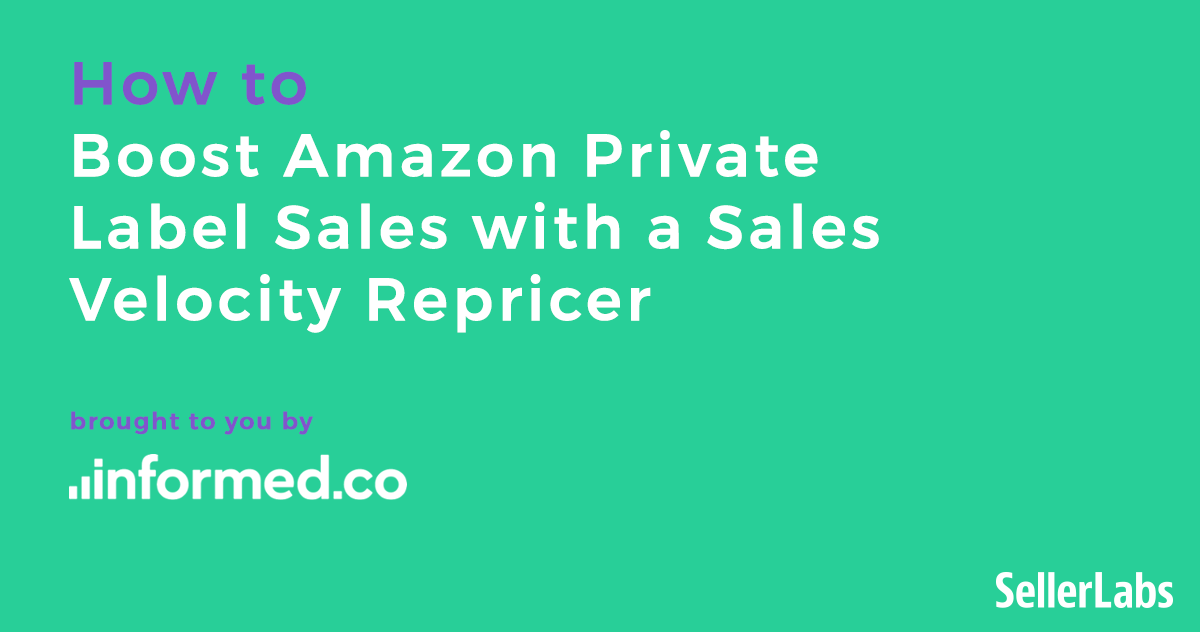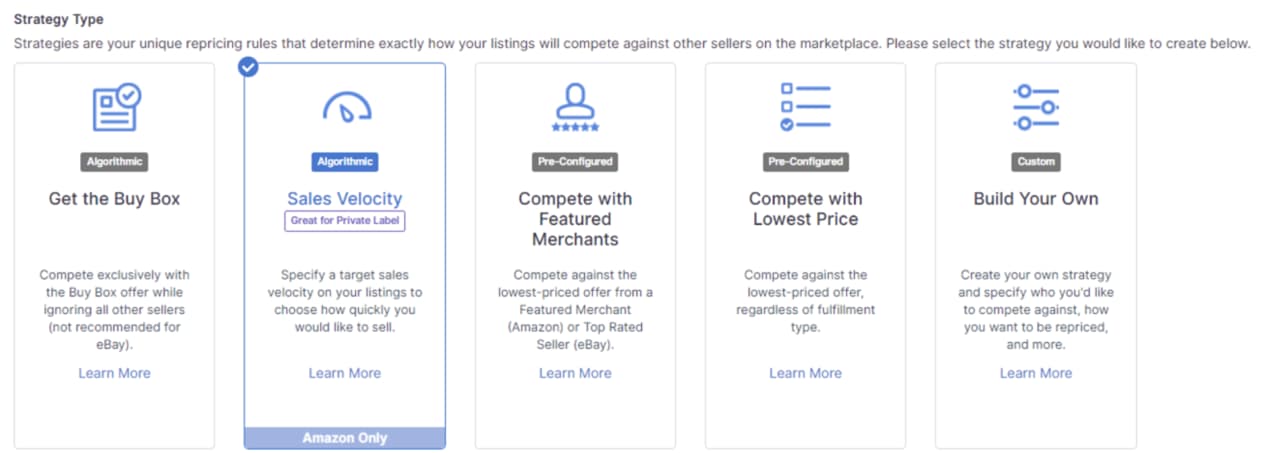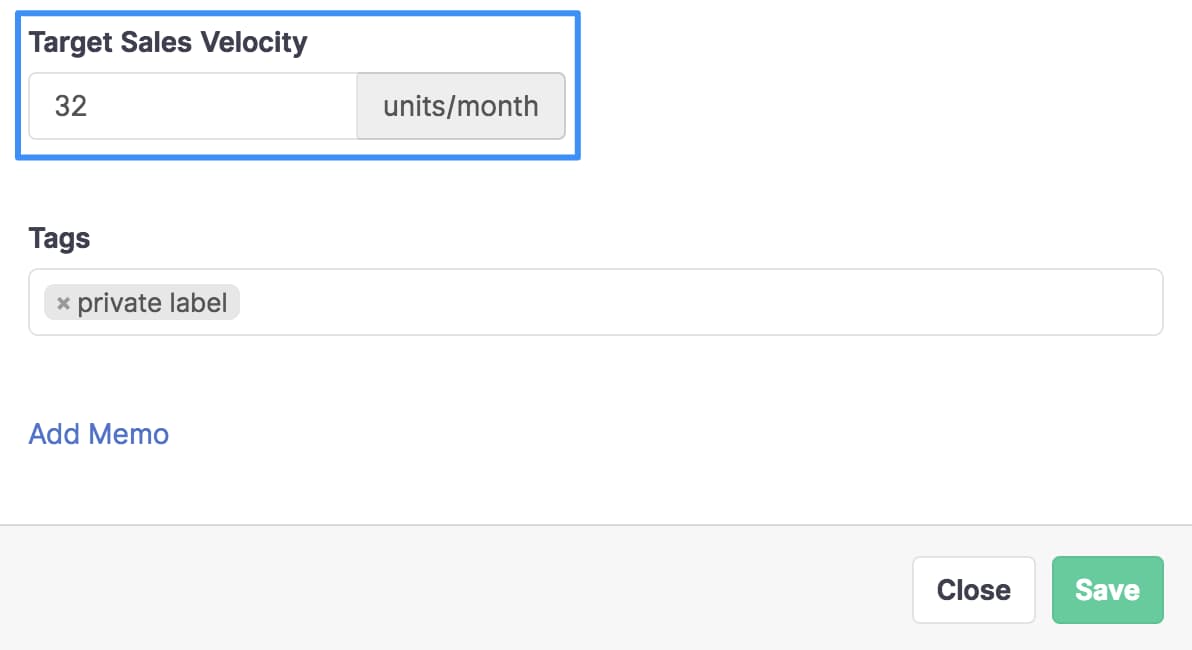How to Boost Amazon Private Label Sales with a Sales Velocity Repricer

This blog post was originally contributed by Erik Mathes, SEO Content Creator and Copywriter at Mastercard.
If you rely on private label products to fuel your growth on Amazon, chances are you’ve gone on a fruitless search for a strategic repricing tool to help drive more profitable sales.
Traditional Amazon repricing tools rely on the price changes of competing sellers to trigger your own price changes, and because private label listings typically face limited or no competition, sellers couldn’t benefit from using these repricing tools on private label products and other Amazon listings in the same position.
But those days are in the past now. The team at Informed.co (formerly Appeagle) identified this major gap in the Amazon repricing landscape and decided to do something about it.
That’s what led our expert engineers to build a brand new sales velocity repricer powered by a proprietary algorithm that helps Amazon private label sellers (and other Amazon sellers facing little to no competition on their listings) take advantage of automated repricing in a way that makes sense for them.
Read on to discover how our algorithmic sales velocity repricer can work for Amazon private label and white label products, as well as other products like Amazon product bundles, to keep your inventory flowing — and your bottom line growing like you’ve never experienced.
How Informed.co’s sales velocity repricer works for private label products
As discussed, typical automated repricing strategies rely on competitor price changes to trigger repricing events of your own, which is why we had to look elsewhere to find the appropriate trigger to change the prices of private label listings facing no competition.
That’s what led us to focus on sales velocity.
Sales velocity is a metric applied to individual products or your total inventory to measure how many units you’re selling over a specific amount of time. We chose to focus on individual ASINs’ 30-day sales velocity for our new private label repricer, since many sellers already think in terms of 30-day timeframes.
Now Informed.co users can conveniently view a rolling 30-day total for units sold, as well as adjust their target sales velocity, straight from their listings dashboard.
Customers who would like to use Sales Velocity Repricing can simply select it from a set of strategy choices, as pictured in the image below. From there, they can input their minimum and maximum prices to immediately begin pushing algorithmic price changes.
It’s important to have a minimum price so that we never sell your item for a loss in an effort to speed up sales velocity. Thankfully, we make it easy to calculate your minimum price based on your lowest acceptable profit margin.
Our software will automatically factor in your costs and marketplace fees in order to ensure that you are making enough money on the sale to be happy. And, you can set your min and max desired profit as a fixed currency amount or a percentage, depending on what works best for you.
On your listings page, you can adjust your target 30-day sales velocity per ASIN at any time by editing individual listings and changing the number in the Target Sales Velocity field (shown below), and you can even edit them in bulk if you’d like to apply the same target velocity to numerous listings. Adding tags, such as “private label” or “white label,” as well as memos could also help keep your listings better organized.
Once you set your target 30-day sales velocity and input your min and max prices, you’ll be ready to start using your sales velocity repricer.
How Informed.co’s sales velocity repricer handles price changes
When you start using Informed.co’s sales velocity repricer, you’ll notice that it tests how the market responds to your products at various price points.
Based on the market’s response and the gap between your product’s target velocity and current velocity, your repricer will adjust your price upward or downward in an attempt to generate enough sales to hit your sales velocity goal.
So, suppose your 30-day sales velocity for a cell phone case is 32 units (as pictured above), meaning you were able to sell 32 in the past 30 days, and you’d like to increase it to 40 units over the next 30 days. You’d then set your target sales velocity to 40 for that cell phone case and input minimum and maximum price points to set your optimal price range.
Then, our sales velocity algorithm will go to work, adjusting your prices each day based on the previous day’s sales results. If it seems that a lower price will drive more sales, our sales velocity repricer will strategically lower your price slightly to test if it stimulates more sales.
On the flip side, if it seems that you’ll be able to maintain your current sales velocity at a higher price based on previous days’ sales results, the repricer may raise your price slightly higher in an attempt to boost profit margins while still hitting your target sales velocity.
When you should use Informed.co’s algorithmic sales velocity repricer
There are a few specific scenarios that are perfect for using Informed.co’s sales velocity repricer, namely:
- Listings with no competition
- Inventory management
- Market discovery
We’ve already focused on why listings with no competition are ideal candidates for this new style of repricing, so let’s delve into the other two.
Use sales velocity repricing for inventory management
Amazon imposes fees on FBA sellers for long-term inventory storage and deadlines for temperature-sensitive products, two events that sales velocity repricing was made for.
If you’re looking to avoid unnecessary long-term FBA inventory storage fees, you can easily set up your sales velocity repricer to sell out of an ASIN by a specific target date. That way, you’ll simultaneously generate revenue and miss out on profit-pinching Amazon fees.
Same goes for temperature-sensitive products as a removal deadline is approaching. If you sell chocolate, for example, you can set your sales velocity target to sell out of these products just before the date that Amazon deems them unsellable. That way, you avoid having products removed from FBA and returned to you (or, worse, being disposed of).
Use a sales velocity repricer for market discovery and price testing
Say you just launched a new private label or white label product and you’re not sure what the market is willing to pay for it.
In this instance, our sales velocity algorithm can help you determine the best selling price by adjusting your price up or down based on your target velocity.
After some days of testing the market, your repricer will discover the sweet spot that generates the number of sales you’re targeting. Over time, you can shift that target lower or higher and have the repricer adjust your prices as necessary to hit your new goals.
When you should not use sales velocity repricing
Sales velocity repricing is made for the specific selling scenarios we discussed, yet there are other situations that would call for using different repricing strategies instead.
On highly competitive products, we recommend using traditional repricing strategies based on your competitors’ price changes, such as our Get the Buy Box algorithmic repricing strategy.
Instead of aiming for a target sales velocity, Get the Buy Box uses a different proprietary algorithm to adjust your price relative to the current Buy Box price until you win the Buy Box. Once you’re in the Buy Box, Get the Buy Box will monitor the listing landscape and will even raise your price to a level that will boost your profit margins and keep you in the Buy Box, if possible.
You can also use custom rules-based repricing strategies if you’d like to home in on a specific type of competitors and have your prices react in a specific way to their price changes. Veteran FBA seller Ryan Grant uses Informed.co’s rules-based repricer to reprice above his lowest-priced FBA competitor by 1.5% on the majority of his listings, helping him achieve 7-figure eCommerce sales while he’s still in his twenties.
Of course, you can also use price-matching strategy and price below competition when using a traditional automated repricing platform, two strategies that each have their own rationale for utilization in every Amazon seller’s toolkit.
It’s a great day for Amazon private label and white label sellers
So, now that you know you can use Informed.co’s new sales velocity repricing tool to achieve your goals as an Amazon private label seller more easily, there only logical thing to do next would be to give it a test run.
Thankfully, Informed.co offers a free 14-day trial where you can try our sales velocity repricer alongside our traditional rules-based repricing strategies and our algorithmic Get the Buy Box strategy for any listings facing heavy competition.
And remember, you can even use Informed.co’s sales velocity repricer on your Amazon product bundles, as well as to sell out of a specific product by a target date so you avoid FBA inventory storage fees and product removal deadlines.
We hope you’re as excited as we are about this groundbreaking new tool for private label and white label sellers, and if you’d like to try Informed.co’s repricing tool suite free for 14-days, click the image below to get started.
About the Author
This is a guest post by Erik at Informed.co about a brand new algorithmic sales velocity repricer built specifically for private label sellers, white label sellers, and other sellers facing little to no competition on Amazon listings.
Erik Mathes creates content for eCommerce sellers at Informed.co, an automated repricing platform for Amazon, Walmart Marketplace, and eBay sellers. Read more of his articles on Soaring Profits, the blog of Informed.co.

Maria is an SEO Content Specialist at Seller Labs. Once captured by digital and content marketing in her student days, she keeps living and breathing it ever since.










